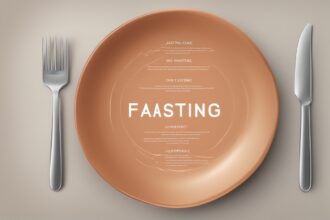Hey there, health enthusiasts! If you’ve been curious about the buzz surrounding fasting and its potential benefits for your body and mind, you’re in the right place. Fasting isn’t just a trend—it’s a practice rooted in history and backed by modern science for improving metabolic health, mental clarity, and even longevity. Today, we’re diving deep into the world of fasting protocols, exploring the different types, how they work, and which might be the best fit for your lifestyle. Whether you’re a newbie or a seasoned faster, this guide will break down the science and offer practical tips to help you navigate these dietary strategies safely and effectively. Let’s get started!
What Are Fasting Protocols and Why Do They Matter?
Fasting protocols refer to structured methods of abstaining from food or specific nutrients for a defined period. These approaches aren’t about starvation but rather about giving your body a break from constant digestion to trigger processes like autophagy—where cells clean out damaged components (Levine & Kroemer, 2019). From weight loss to improved insulin sensitivity, the benefits of fasting are gaining attention in scientific circles. But not all fasting methods are created equal. Each protocol has unique rules, durations, and goals, making it crucial to understand them before jumping in. So, let’s explore the most popular types of fasting regimens and see what makes them tick.
Intermittent Fasting: The Beginner-Friendly Approach
Intermittent fasting (IF) is arguably the most popular of all fasting protocols, and for good reason—it’s flexible and sustainable for most people. IF involves cycling between periods of eating and fasting, with no strict rules on what you eat, just when. The most common method is the 16/8 protocol, where you fast for 16 hours and eat during an 8-hour window. Studies suggest IF can aid weight loss by reducing calorie intake and improving fat metabolism (Patterson & Sears, 2017). It’s also linked to better blood sugar control, which is a game-changer for those at risk of type 2 diabetes (Horne et al., 2015). If you’re new to fasting routines, start with a 12/12 split to ease your body into it. Remember to stay hydrated during fasting windows—water, black coffee, or herbal tea are your best friends!
Water Fasting: The Ultimate Reset
For those seeking a more intense experience, water fasting involves consuming nothing but water for a set period, typically 24–72 hours. This isn’t for the faint-hearted, as it demands serious preparation and caution. Water fasting is often used for detoxification and has been studied for its potential to lower blood pressure and improve markers of oxidative stress (Goldhamer et al., 2002). However, it’s not without risks—electrolyte imbalances and fatigue are common if not done properly. If you’re considering this fasting method, consult a healthcare provider first, especially if you have underlying conditions. Start small with a 24-hour fast and ensure you break it with light, nutrient-dense foods like broth or fruit to avoid shocking your system.
Alternate-Day Fasting: A Rigorous Rhythm
Alternate-day fasting (ADF) takes discipline to a new level by alternating between “feast” days, where you eat normally, and “fast” days, where calorie intake is drastically reduced (often to 500–600 calories). Some folks go for a complete fast on those off days, but modified versions are more common. Research shows ADF can be effective for weight loss and reducing inflammation markers (Varady et al., 2013). It’s a powerful tool among fasting protocols, but it’s not for everyone—hunger pangs and irritability can be real challenges. To make ADF work, plan your fast days with low-calorie, high-fiber foods like veggies to stay full, and avoid overeating on feast days, which can undo your progress.
Religious and Cultural Fasting: Tradition Meets Health
Fasting isn’t just a modern health hack; it’s been part of cultural and religious practices for centuries. Think Ramadan for Muslims, where fasting from dawn to dusk is observed for a month, or Yom Kippur for Jews, a 25-hour fast of atonement. These traditional fasting practices often combine spiritual benefits with physical ones, like improved metabolic flexibility (Trepanowski & Bloomer, 2010). However, they can be challenging if you’re not used to long fasting periods. If you’re participating in such fasting traditions, prioritize hydration during non-fasting hours and focus on balanced meals to sustain energy. Respecting the cultural context while adapting to your health needs is key.
Extended Fasting and Other Niche Protocols
Beyond the mainstream fasting schedules, there are more specialized approaches like extended fasting (lasting over 72 hours) and protocols like the 5:2 diet, where you eat normally for five days and restrict calories to 500–600 on two non-consecutive days. Extended fasting can push the body into deeper ketosis, potentially enhancing fat loss and cellular repair, but it’s not widely studied and carries risks like nutrient deficiencies if prolonged (Longo & Mattson, 2014). Niche fasting techniques often appeal to advanced practitioners, but they require careful monitoring. Always prioritize safety over ambition with these intense fasting methods—your body will thank you.
Practical Tips for Choosing and Following Fasting Protocols
Navigating the world of fasting protocols can feel overwhelming, but with the right approach, it’s totally doable. Here are some actionable tips to help you pick and stick to a fasting routine that works for you:
- Start with your goals—weight loss, mental clarity, or metabolic health—and match them to a protocol like intermittent fasting or ADF.
- Listen to your body; if you feel dizzy or overly fatigued, break the fast with a small meal and reassess your approach.
- Stay hydrated—aim for at least 8–10 glasses of water daily during fasting windows to support your system.
- Plan your meals ahead to avoid impulsive eating and ensure you’re getting balanced nutrition during eating periods.
Common Challenges and How to Overcome Them
Let’s be real—fasting isn’t always a walk in the park. Whether you’re experimenting with different fasting regimens or sticking to one, hurdles can pop up. Here’s how to tackle some of the most common issues:
- Hunger: It’s normal, especially at first. Distract yourself with light activity or sip on zero-calorie drinks like green tea.
- Low Energy: If you’re dragging, scale back the fasting duration or ensure you’re getting enough electrolytes on eating days.
- Social Eating: Fasting around friends or family meals can be tricky—communicate your goals and plan fasting windows around social events if possible.
- Overeating: Breaking a fast with a binge can negate benefits. Start with small portions and focus on protein and fiber to stay satisfied.
So, there you have it—a comprehensive look at the diverse world of fasting protocols. Whether you’re drawn to the simplicity of intermittent fasting, the intensity of water fasting, or the cultural depth of religious fasts, there’s likely a method that fits your life. The key is to start slow, stay informed, and prioritize your health above all. Fasting can be a powerful tool for wellness, but it’s not a one-size-fits-all solution. Experiment with different fasting strategies, track how your body responds, and don’t hesitate to seek guidance from a nutritionist or doctor if you’re unsure. Here’s to finding your rhythm and reaping the rewards of a well-chosen fasting routine!
References
- Goldhamer, A. C., Lisle, D. J., Sultana, P., Anderson, S. V., Parpia, B., Hughes, B., & Campbell, T. C. (2002). Medically supervised water-only fasting in the treatment of borderline hypertension. Journal of Alternative and Complementary Medicine, 8(5), 643–650.
- Horne, B. D., Muhlestein, J. B., & Anderson, J. L. (2015). Health effects of intermittent fasting: Hormesis or harm? A systematic review. American Journal of Clinical Nutrition, 102(2), 464–470.
- Levine, B., & Kroemer, G. (2019). Biological functions of autophagy genes: A disease perspective. Cell, 176(1-2), 11–42.
- Longo, V. D., & Mattson, M. P. (2014). Fasting: Molecular mechanisms and clinical applications. Cell Metabolism, 19(2), 181–192.
- Patterson, R. E., & Sears, D. D. (2017). Metabolic effects of intermittent fasting. Annual Review of Nutrition, 37, 371–393.
- Trepanowski, J. F., & Bloomer, R. J. (2010). The impact of religious fasting on human health. Nutrition Journal, 9, 57.
- Varady, K. A., Bhutani, S., Klempel, M. C., Kroeger, C. M., & Trepanowski, J. F. (2013). Alternate day fasting for weight loss in normal weight and overweight subjects: A randomized controlled trial. Nutrition Journal, 12, 146.






